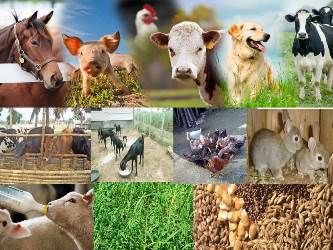



Received: 01-Jul-2022, Manuscript No. GJASLPAB-22-73852 ; Editor assigned: 04-Jul-2022, Pre QC No. GJASLPAB-22-73852 (PQ); Reviewed: 21-Jul-2022, QC No. GJASLPAB-22-73852 ; Revised: 29-Jul-2022, Manuscript No. GJASLPAB-22-73852 (R); Published: 05-Aug-2022, DOI: 10.35841/2408-5499.22.10.170
One of the most important research tools in the biological sciences, transgenic animals, continue to exist. Transgenic animals have distinctive models that are specifically designed to tackle particular biological concerns. As a result, the capacity to insert functional genes into animals offers a very potent tool for understanding intricate biological systems and processes. When it comes to animal species with long life cycles, gene transfer is especially useful since it allows for quick genetic alteration. Any organism whose genetic makeup has been altered through the use of genetic engineering techniques is referred to as a Transgenic Organism (TO) in general. The genetic makeup of this organism has been altered by the incorporation of genetic material from an unrelated organism.
Genes may be inserted, deleted, or mutated in transgenic organisms. In a process known as horizontal gene transfer, inserted genes typically originate from different species. When foreign DNA enters the cell membrane for any reason, this can occur in nature. This can be accomplished artificially by using an extremely tiny syringe to physically insert the extra DNA into the nucleus of the intended host, by connecting the genes to a virus, by firing tiny particles from a gene gun, or by electroporation. The ability of lentiviruses to transmit genes to animal cells and the capacity of Agrobacterium to transfer genetic material to plants are two examples of natural forms of gene transfer that are exploited by other techniques. Genetic advances have made it possible for humans to alter species' DNA and genes. By merging the DNA of the lambda virus with a monkey virus, first recombinant DNA molecule has produced.
Mice that were genetically modified to manufacture human tissue plasminogen activator were the first animals to synthesise transgenic proteins in their milk. AquAdvantage salmon was the first transgenic animal to be authorised for food usage. The fish were modified with a promoter from an ocean pout and a growth hormoneregulating gene from a Pacific Chinook salmon, allowing it to develop all year round rather than just in the spring and summer. TOs are employed in agriculture, experimental medicine, and the manufacturing of pharmaceuticals, with potential use in conservation. By injecting DNA into mouse embryos and then implanting the embryos in female mice, the first transgenic animal was produced. Based on the intended use of the transgenic, broad categories of transgenic animals are currently being developed. These categories include research into human diseases, the production of products for human therapeutic use, the production of industrial or consumer products, the enhancement of production or food quality traits, the enrichment or enhancement of the animal-human interactions, and the improvement of animal health.
The first animal to be cloned from an adult somatic cell was a sheep named Dolly. Animals that have been genetically altered serve as test subjects for phenotypic and biomedical research. Transgenic animals have been used to produce recombinant proteins. We can produce proteins that could be employed in medical treatments by altering the DNA or transferring DNA to an animal. Rats, sheep, and pigs have all been given the ability to express human proteins in stable ways. For instance, transgenic pigs with human-histocompatibility have been examined in the hopes that the organs will be appropriate for transplant with fewer possibilities of rejection. Human-alpha-1- antitrypsin, which has been tested in sheep and is utilised in treating humans with this deficit, scientists declared that they had produced the first breeding line of genetically altered primates and had successfully introduced a gene into a primate species. Chinese scientists developed dairy cows with human genes so that their milk would be identical to that of humans.
Animals that have been genetically altered to carry genes from different species, or transgenics, have the potential to improve human welfare. Some common techniques used to produce transgenic animals include DNA microinjection, embryonic stem cell-mediated gene transfer, retrovirus-mediated gene transfer, and artificial chromosome transfer.